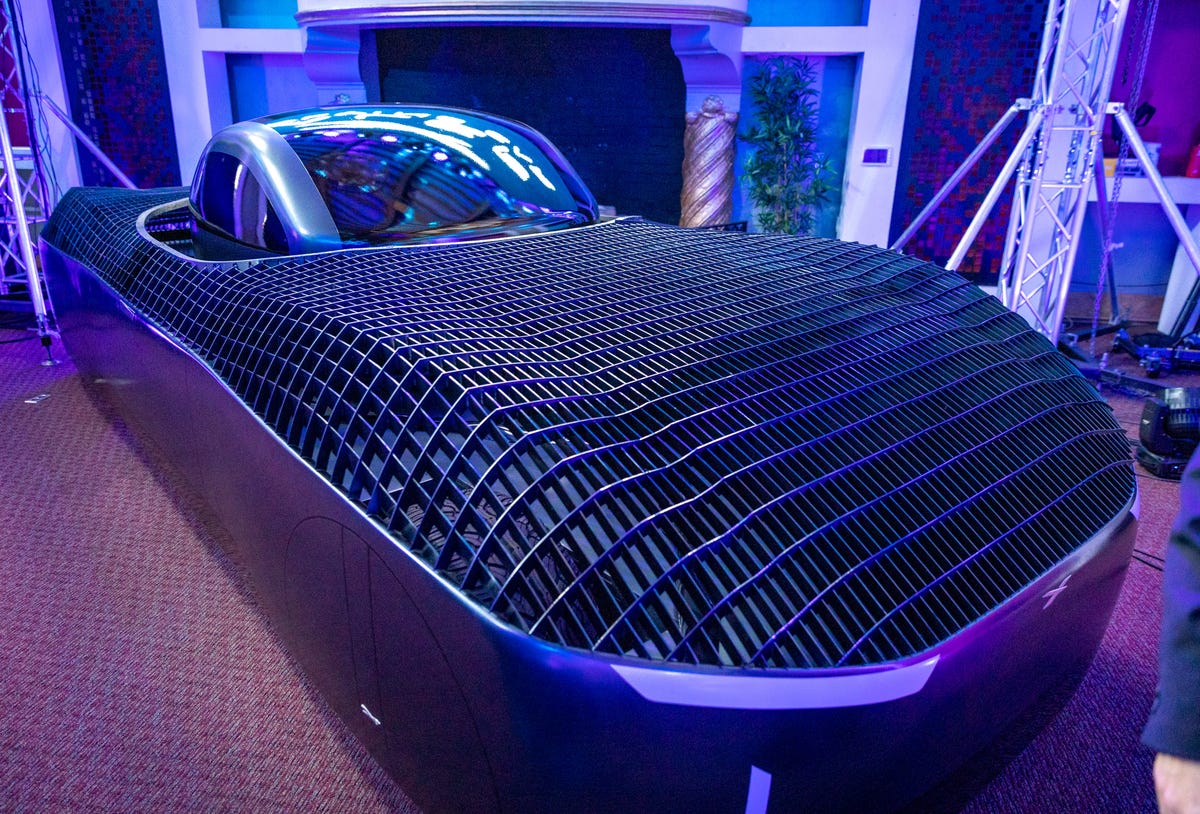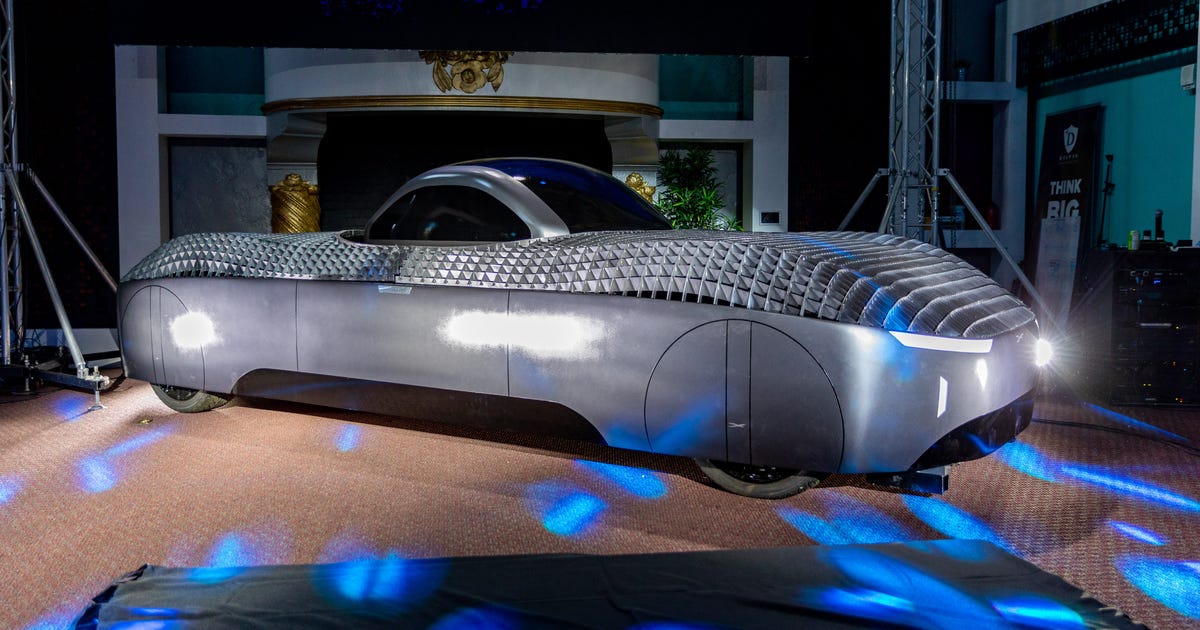Alef Aeronautics unveiled a prototype of its first Alef flying car on Wednesday, a $300,000 machine the company hopes will let well-heeled commuters drive on roads and soar over traffic starting in 2025.
The Alef Model A is designed to have a driving range of 200 miles and a flying range of 110 miles. The startup also started taking orders at its website for the first models.
The company showed a single passenger prototype of the Alef Model A and two flying prototypes called Alef Zero at a press conference at Draper University in San Mateo, California, home to one of the company’s two Silicon Valley design centers. The Model A will be fitted with the eight propellers that should let it first fly in coming months, Chief Executive Jim Dukhovny said in an interview, and ultimately could lead to a $35,000 Model Z in 2030 that requires only a drone license to operate.
The company is among a host of aeronautics firms hoping to revolutionize transportation with electric vertical takeoff and landing aircraft and autonomous piloting technology. But the engineering challenges are big, and the regulatory challenges are perhaps even bigger as citizens, the Federal Aviation Administration and local governments wrestle with the idea of a sky populated by hundreds of personal aircraft and maybe delivery drones too.
The Alef flying car will revolutionize transportation, Dukhovny said, pointing to flying cars in the Back to the Future and Bladerunner movies and the Jetsons cartoon. A video running during the event showed an animation with dozens of flying cars streaming in aerial lanes above San Francisco.
“Almost every vision of the future came up with exactly the same thing: a flying car,” Dukhovny said. “We can actually solve all traffic in the world for the next hundred years.”
A hybrid aircraft design
As designed, the battery powered machine Alef will take off vertically using eight propellers housed inside a body about the size of a large sedan. One or two passengers sit inside a bubble, but most of the interior of the vehicle’s mesh-topped body is just air.
That vertical takeoff technology is well established by the drone industry, and the company has tested it with its two Alef Zero prototypes.

The top surface of the Alef Model A flying car is an open mesh to let air flow through. The body houses four propellers on one side of the passenger bubble and four propellers on the other side.
Stephen Shankland/CNET
What comes next, so far tested only with smaller-scale prototypes, is more unusual but crucial to the aircraft’s design. The body pivots 90 degrees around its long axis to shift from upward flight to forward flight. As it pivots, one side of the car’s body becomes the top wing, and the other side becomes the bottom wing.
If you imagine your hand as the Alef Model A, it looks like your hand held flat, fingers pointing forward as you drive. But then as it flies, you twist your hand so your thumb is on top. Now your flat palm faces into the wind as it flies.
The bubble that was facing forward for a drive mode pivots along two axes during this transition so it can face forward for the flight, too.
It’s an ambitious project. Hybrid designs are flexible, but they’re not as good as special-purpose designs. A flying car will be worse at driving than a car and worse at flying than an aircraft that needn’t worry about steering, braking and fender benders on the freeway.
But Alef is ambitious, with two teams working on parallel designs to try to speed development, one in San Mateo and one farther south in Silicon Valley at the company’s Santa Clara headquarters.
And its hopes to start with a more modest ability than flying dozens of miles: short hops that could briefly lift the aircraft over problem areas on roads.
200-pound payload to start
The first Alef Model A should have a payload of about 200 pounds, including the passenger and baggage, said engineering director and co-founder Constantine Kisly. Most commuter vehicles only carry one passenger, he pointed out, but he’s also working on a two-person design that doubles that payload.
The company also wants to build an Alef design powered by hydrogen fuel cells, said Oleg Petrov, another engineer and company co-founder. That should have a much longer range of 400 miles, he said.
The company hasn’t yet tested the pivot from upward takeoff to horizontal flight with a human passenger, Petrov said. That’s considerably more complicated and risky and will take place after the startup raises another round of funding. Tim Draper, a high-profile Silicon Valley venture capitalist who also funded EV maker Tesla, is an early Alef investor.
The Alef Z ultimately could have a range of 200 miles in flight and 400 miles on the road with models that can carry four to six passengers, the company hopes.

